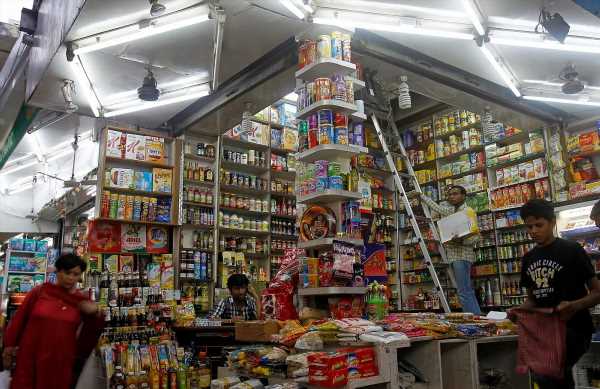
FMCG supply gridlock: Demand falls, inventory adds up
November 22, 2023The supply chain for fast-moving consumer goods (FMCG) companies is seeing congestion due to persistently low demand.
This has led to an increase in inventory days, with stocks accumulating at distributors and compelling them to extend higher credit periods to retailers.
Distributors, Business Standard spoke to, revealed that demand inventory days have more than doubled in some cases, forcing them to offer credit terms as long as 45 days to retailers, as consumer offtake continues to face pressure.
A distributor said that companies have consistently been stocking up at distributors, and in some instances, distributors have resorted to pushing excess stock to retailers.
The distributor added that although this was done before Diwali, it might become challenging to push stock after the festival season as demand starts to peter out.
In the western part of the country, a distributor reported that inventory days in cities with depots have doubled, and retailers are requesting more extended payment periods.
In some cases, retailers are taking as long as 45 days to settle payments.
In the east, the situation mirrors that of the western region, but distributors are taking longer to make payments to companies as retailers are also delaying payments.
For major brands, inventory days have doubled from the usual holding period of seven to eight days to 12–15 days.
Some other companies, particularly those in the food sector, have experienced a surge in distributor inventory holding days, reaching 45 days — and even 60 days in some instances.
“Festival season demand did not offer any respite this year, and the summer wedding season remained weak, causing a build-up in inventory for the past few months.
“One has to see how demand plays out after the rabi season,” said a distributor based in the east.
Another distributor mentioned that, although he did not extend credit to retailers, he opted to sell lower stocks, resulting in a 20 per cent drop in sales.
“Retailers have been asking for higher credit days, but I decided to sell lower stock instead,” he said.
he situation is consistent in central India, where inventory days have increased to 20 days from a lower period earlier.
Another distributor in central India noted that demand for food and beverages remained steady ahead of festivities, but non-food items faced pressure.
“I suspect demand will dry up for the rest of the month as retailers are already sitting on high stock levels, and this could carry on into December.
“In non-foods, the inventory days have gone up to 30 from 20–22 days earlier,” the distributor added.
In North India, inventory days have more than doubled to around 40 days, which is typically 15 days.
Credit to retailers for fast-moving stock-keeping units is at 25–26 days (which typically means retailers clear payments to distributors in seven to eight days), whereas for slow-moving items, credit days have increased to 35–40 days from 15-20 days earlier.
A distributor in North India observed, “This festival season, demand has been down by 30-35 per cent compared to the average Diwali offtake that we witness.
“Gift packs, which see high demand during this time, have not sold well, nor have beverages or namkeens (salty snacks), which typically witness a strong pick-up during this time.”
However, NIQ (formerly known as NielsenIQ) reported that the FMCG industry experienced robust growth in the July–September quarter, with rural markets leading the recovery amid easing inflation.
The industry saw 9 per cent year-on-year (Y-o-Y) growth in terms of value in the second quarter of 2023–24, while sales volumes rose 8.6 per cent during this period, indicating positive consumption patterns at the all-India level.
Volumes in rural markets grew 6.4 per cent Y-o-Y in the quarter, NIQ said.
Rural markets showed “signs of recovery”, with consumption picking up in the September quarter compared to the year-ago period. Urban markets maintained a “stable rate of consumption growth”, according to NIQ.
Bizom also noted a pick-up in demand at the retail end in October.
Excluding branded commodities, FMCG sales grew by 7 per cent in value terms in October compared to the same month last year.
However, inclusive of branded commodities, sales were down by 4.8 per cent, according to the retail intelligence firm.
Consumer goods sales ((without considering branded commodities) in urban areas grew by 1.6 per cent, while rural areas witnessed a substantial increase of 10.2 per cent, Bizom reported.
Disclaimer: This article is meant for information purposes only. This article and information do not constitute a distribution, an endorsement, an investment advice, an offer to buy or sell or the solicitation of an offer to buy or sell any securities/schemes or any other financial products/investment products mentioned in this article to influence the opinion or behaviour of the investors/recipients.
Any use of the information/any investment and investment related decisions of the investors/recipients are at their sole discretion and risk. Any advice herein is made on a general basis and does not take into account the specific investment objectives of the specific person or group of persons. Opinions expressed herein are subject to change without notice.
Source: Read Full Article



